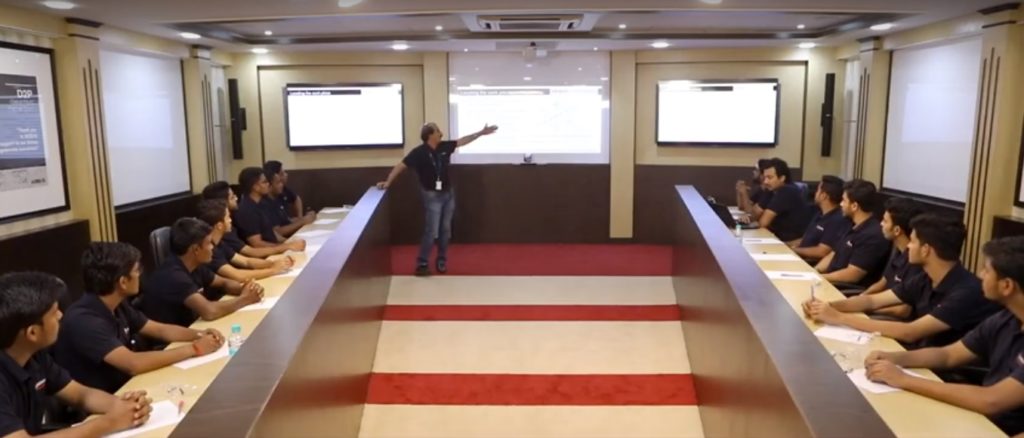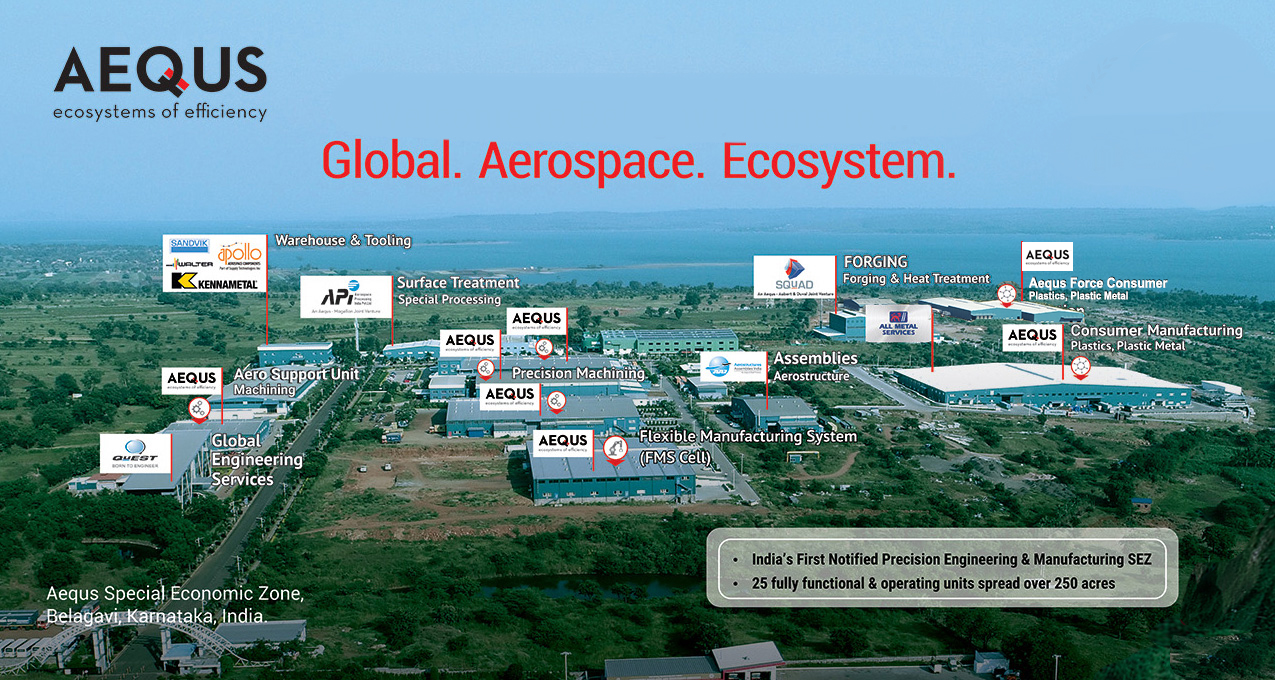The manufacturing sector is going through a paradigm shift with the rise of technologically driven operations. Aerospace and Defence companies are at a crossroads today as they must reimagine their processes and innovations and realign their business goals to prepare for this digital future. The aerospace and defence suppliers in India are mainly MSMEs and SMEs. However, the large global OEMs are looking at intensive training schedules to bring them up to mark. Importantly, it is necessary to do this as they need to maintain costs (India offers the cheapest labour) and prove a point to their counterparts in Europe and US as to how India is scaling up on the global map in terms of resources.
New Vistas
Some of new innovations being seen in the aerospace and defense space include VRI cameras with higher resolution and higher-fps, higher sensitivities together higher throughputs. Specialized techniques to solve both new and old problems in the field are also new. For example, digital image correlation strategy being used at BOEING (in short, they are replacing strain gauges with imaging); and also in Defense we have people are looking at deformation upon high-speed impact. Integration of DAQ with high-speed video and Schlieren imaging for shock wave analysis and imaging transparent flows (the neat Jet videos) are also in. In aerospace manufacturing, innovations must begin from the shop floor. Technologies like Flexible Manufacturing Systems (FMS) and sophisticated ERP solutions help streamline operations, and ensure real-time access to accurate data. “Automation technologies like FMS are particularly useful for ‘zero error’ industries such as aerospace manufacturing as it improves the quality of the product and precision involved in manufacturing. Processes such as forging, machining, sheet metal fabrication, surface treatment and assembly are often inter connected in the manufacturing of aerospace parts. An integrated system helps the entire manufacturing cycle become more agile and responsive with seamless data exchange,” says Aravind Melligeri, Chairman and CEO, Aequs Group. There are a number of government and industry initiatives, new research facilities and startups being established driving innovation in new aviation electronics technologies being developed in India. Multicore processors and system on chip (SOC) are one of the major technological trends that are been seen growing in next generation commercial and defense avionics. The next level technologies are well identified as predictive maintenance, improved connectivity, augmented reality and machine learning that OEM’s will pursue to transform the aerospace landscape.
Tech Talk
IoT further enhances connectivity and data collection; for instance, how long machine is idle versus cutting time, which part it is machining, how much it is on, which programme it is running, etc. This data is then used to optimise the programme further. AI takes the data to the next level by analysing it further to see how improvement happens. We can technically apply AI to find out the defects we had in the past, commonality in those defects and the root cause of it. “In addition to this, technologies such as VR and AR have also been finding their ground in aerospace and particularly useful for flight simulations and creating interactive training modules. Recently, we became one of the first aerospace companies in India to invest in a Flexible Manufacturing System. This has helped us streamline our applications and manufacture products that surpass our customer expectations. Our FMS unit is fully operational for machining of both hard and soft metal parts,” says Melligeri. 3D printing has also become a mainstay with manufacturing companies in recent times. Aerospace companies have welcomed this as it helps create lighter parts without compromising on the strength and integrity. Airbus used 3D printing to manufacture over 1000 parts for its A350. 3D printing reduces costs and warehousing limitations as parts are produced on demand. The industry is also trying to adopt blockchain to improve transparency in transactions across the supply chain. Munira Loliwala, Business Head – EMPI, TeamLease Services says, “development of next generation artificial intelligence and machine learning applications for the aviation industry will see major spike in research and development in India not only in terms of growth but real-time on and off aircraft applications as well. I see Indian majors working closely and collaboratively with expat defense OEM’s so that the indigenous industry can benefit from the rub-off in terms of technology, IP and quality control, foreign OEM’s in these partnerships will continue to benefit from low costs of production and labor. Additionally the government has also eased export control on defense components which makes Indian markets vying for foreign signoffs and thus become tier two and tier three suppliers to the global supply chain in the short and medium term.”

Skilling Needs
A key factor in this field is the need for skilled people. A good background or basis in fields of Math, Science and Technology/Engineering is a must. Knowledge of topic like drone collision testing, application specific hands-on training (Phantom Academy training), workflow of high-speed imagers and key concepts in photography, ballistics and range applications and digital image correlation also help. Likewise people who know Signals and Systems/ Commanding an Oscope, Advanced Triggering Strategies, Integration of Data Acquisition with Video and Machine Vision for Real-time Analysis also help. To fuel India’s vision of becoming a global aerospace hub, companies need to foster a digitally equipped workforce with skills that can match global competencies. The aerospace industry works on a ‘zero-error’ policy so it is even more critical to have the right workforce. Talented engineers with a background in mechanical, electrical and electronic engineering must be encouraged to consider this sector as a preferred career option. An ideal candidate must have the right knowledge of technical and soft skills. They can then be extensively trained to align their skills to the aerospace sector. “It is also important to upskill or reskill the existing workforce regularly to keep up with customer expectations, volumes and latest technological developments in the industry. This will improve efficiency and reduce redundancy in operations. We believe that skilling has a direct impact on the performance of the company. As a stepping stone, we introduced a systematic training program to nurture the in-house talent pool. The Aerospace Knowledge Center (AKC) in Aequs SEZ, conducts 30-month long on-the-job training for fresh engineering graduates and semi-skilled diploma holders. The primary objective of AKC is to build a bridge between the new entrants and the aerospace industry so that they understand the industry norms and applications to perform better,” adds Melligeri. Loliwala avers, “established players have their training and engineering center’s where employees are developed on flight management systems, computational fluid dynamics (CFD) and digital simulation and visualization, foreign collaborators work closely with technology startups that provide six-month accelerator program, with free access to office space and a pool of mentors and experts within the parent company to help their ideas and business plans take flight, multiple such startups are mentored.”
Vendor Speak
OEMs have been making use of a global supply chain effectively. Globally, commercial Aerospace Manufacturing is over $100 Billion opportunity per year and India exports ~$300 Million, which is negligible. For International A&D majors, India is a lucrative low-cost manufacturing and engineering service base in Asia. Besides machined and sheet parts products, these companies have been outsourcing subassemblies and designing to experienced vendors. The aerospace sector in India is still growing and is highly fragmented. Tier II and Tier III suppliers have just started producing parts for global sectors. Indian suppliers need to have the right systems and workforce to keep up the required pace of production. There is a need for significant investments in tooling and economics of scale to remain cost competitive. “This industry is capital intensive and involves a long project life cycle R&D, engineering design, manufacturing and assembly. Intensive technology and safety requirements demand high investments on R&D and quality control. Indian suppliers will be immensely benefited from progressive government policies that can create an investment vehicle to increase funds and improve access to technologies. Recently, the government allotted ₹100 Billion to create a special purpose vehicle to spur investments in the sector. This is a positive step for aerospace suppliers. To reduce dependency on public sector enterprises, companies must understand and encourage private investments through JVs with global partners and encourage proliferation of aerospace hubs across the country,” says Melligeri.
Now Trending
If India were to become self-reliant and start strengthening its A&D sector, then enough R&D infrastructure, equipment and material development support would be necessary to bridge the existing gap between the country and the global market. Rajender Kumar, Sales Manager, Vision Research, AMETEK Instruments India Pvt. Ltd. says, “cameras with higher speeds, higher resolutions, higher sensitivities, using advanced software packages for analysis (tracking, calculation, correlation, calibration) and machine vision cameras for real-time vision/analysis are some new trends.” To compete with global players, there needs to be an integrated approach with enterprise-wide collaboration, creating a smart ecosystem. Infrastructure plays a critical role in meeting the sector’s requirements mainly due to the industry’s technology requirements. “This requires all the stakeholders to create the right ecosystem by establishing aerospace parks or clusters. These parks create a centralised hub where all activities, including R&D, manufacturing, incubation, logistics, MRO services and skills training are carried out. This will increase time efficiency, coordination in the supply chain and cost optimisation to carry out aerospace specific activities like access to raw materials, design and fabrication, machining, prototyping, testing, quality control, warehousing, etc. This would be a huge boost to the emerging MSMEs, creating synergies in the supply chain,” says Melligeri. Aequs has managed to establish the country’s first aerospace manufacturing ecosystem spread over 250+ acres in Belagavi, Karnataka. “We took a 30-year view of this business and the industry before establishing Aequs SEZ and investing in partnerships and JVs. We have succeeded in integrating the entire manufacturing value stream – from forging and machining to surface treatment and assembly – in a single location with a series of integrated, co-located facilities. This helps build comfort and confidence with the customers that the ecosystem is able to absorb and deliver large packages on a detailed part level and reduce lead time,” concludes Melligeri. While India will not be building a domestically manufactured commercial or defense aircraft, it will continue to use offset policies and partnerships to expand its presence as an aerospace engineering hub supplying next generation systems and components to the largest aerospace and defense manufacturers across the globe.
This story first appeared in Manufacturing Today’s Nov 2019 issue here:
